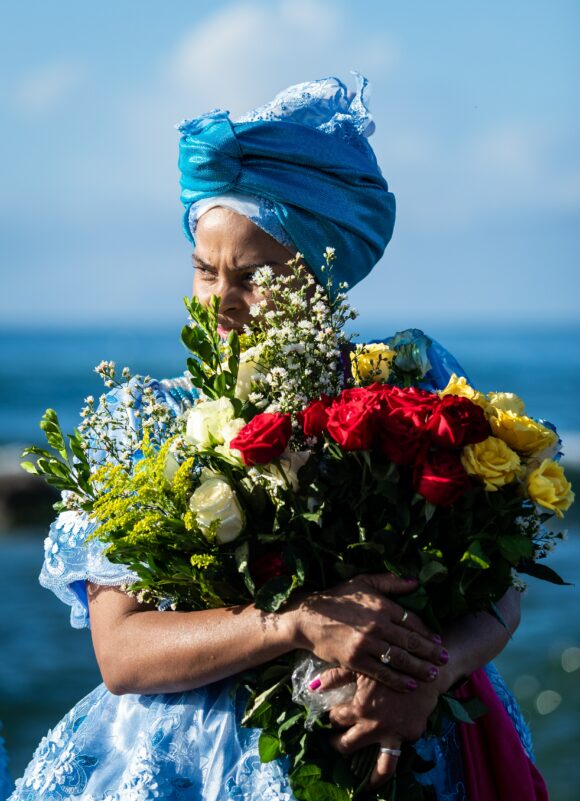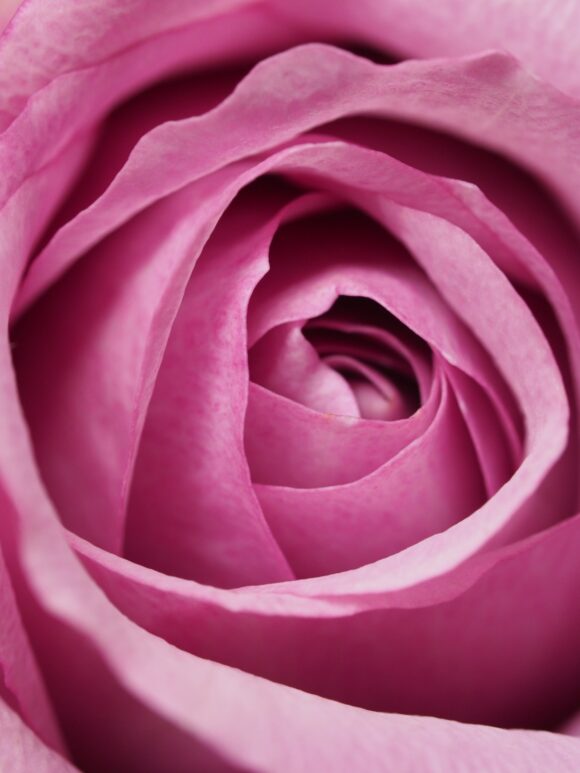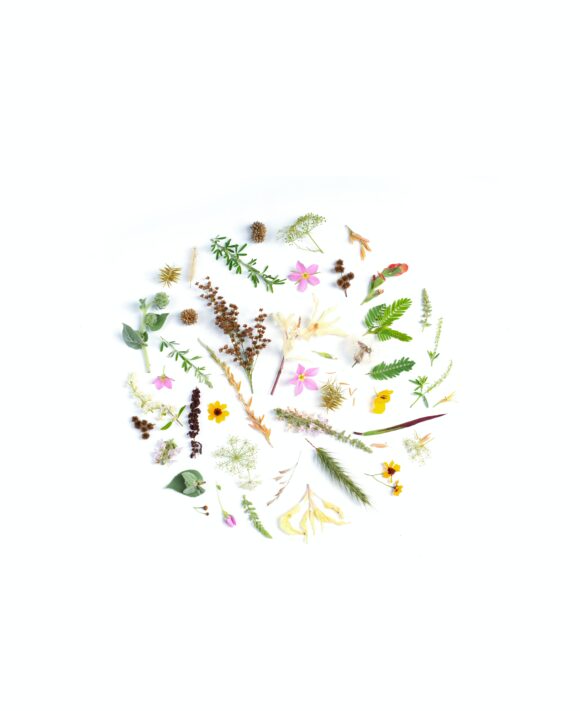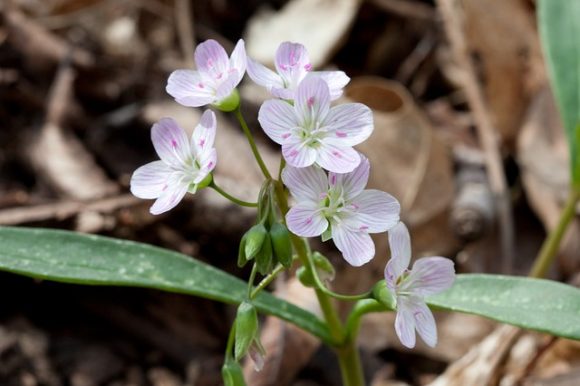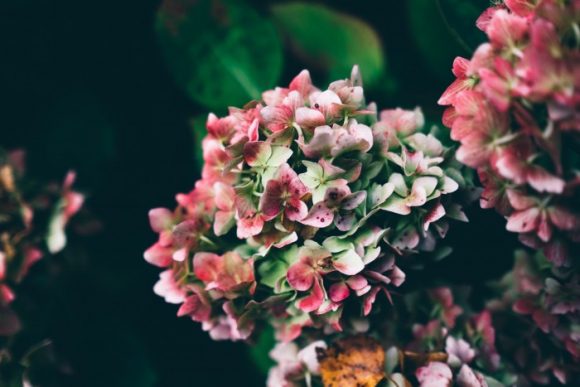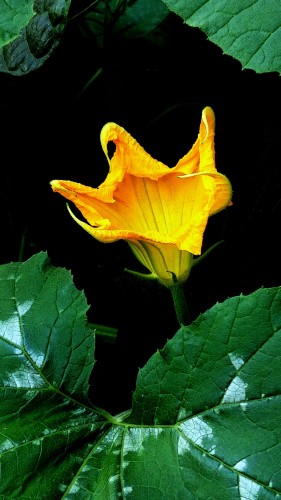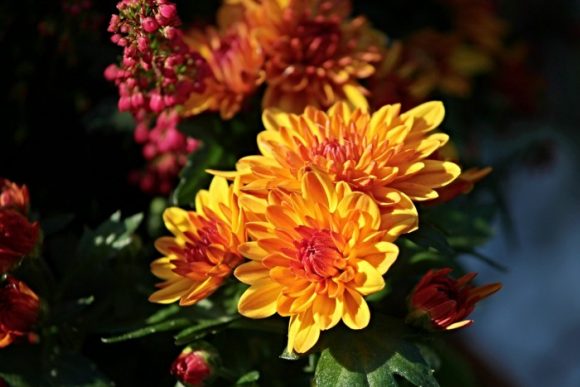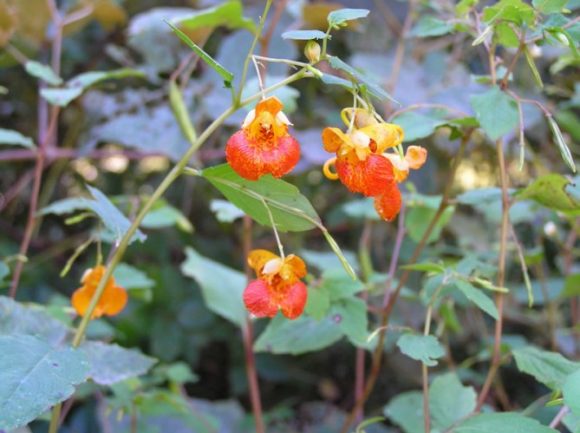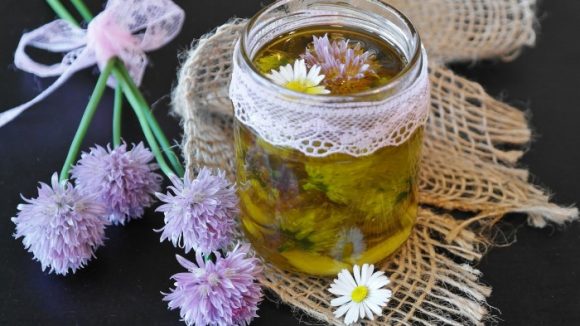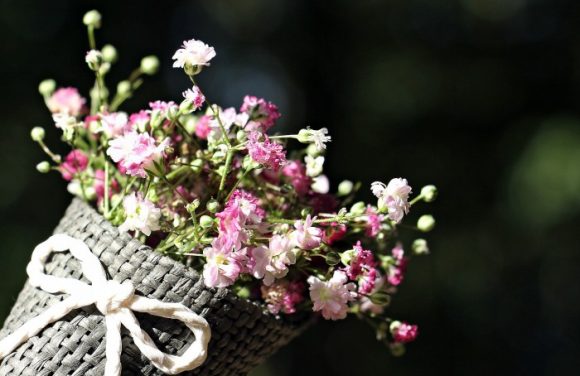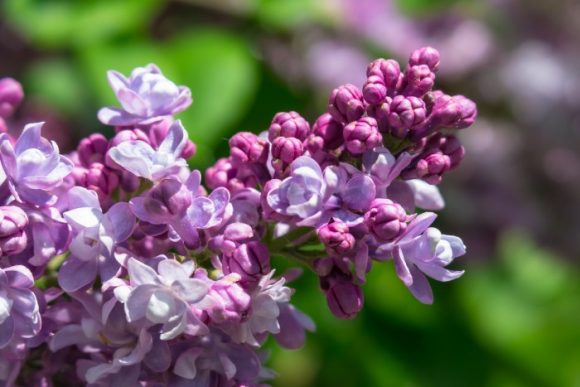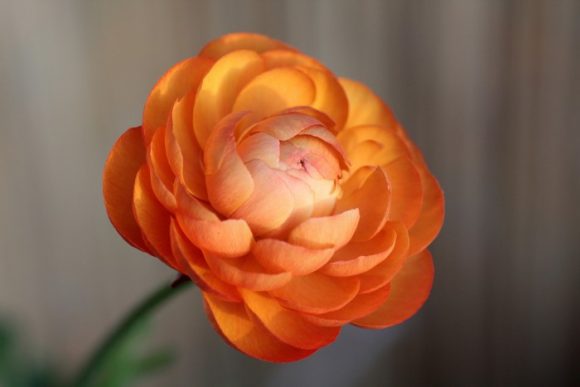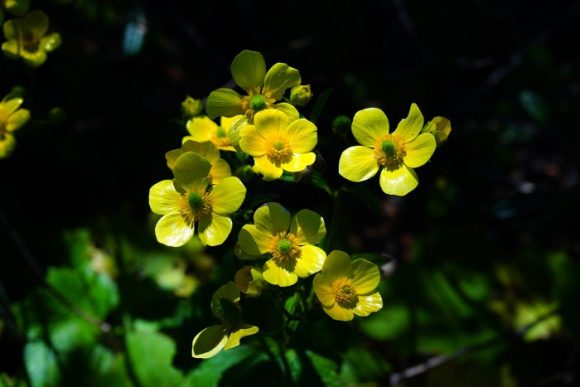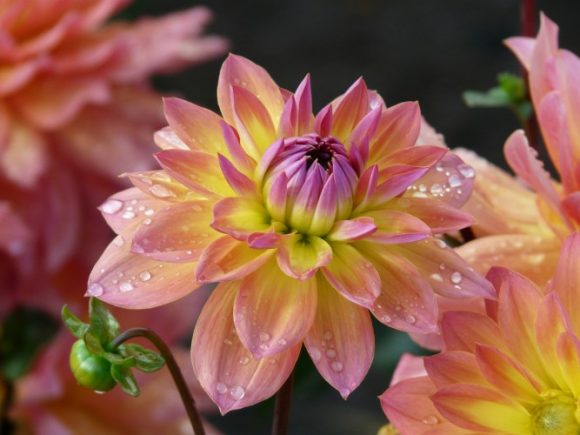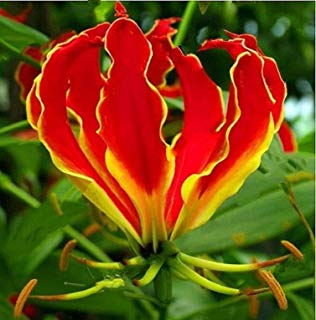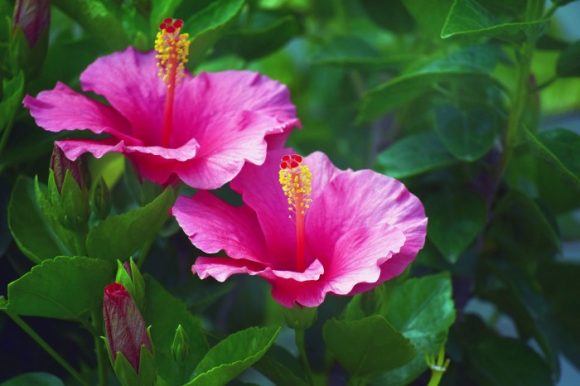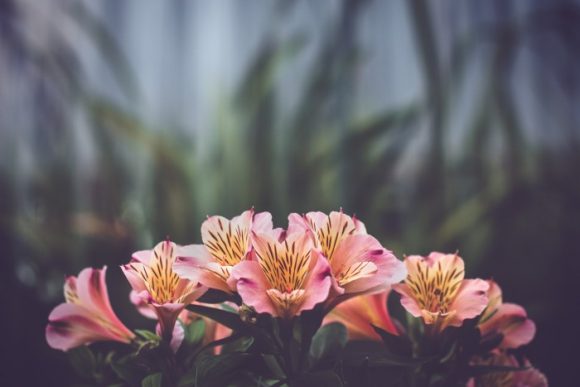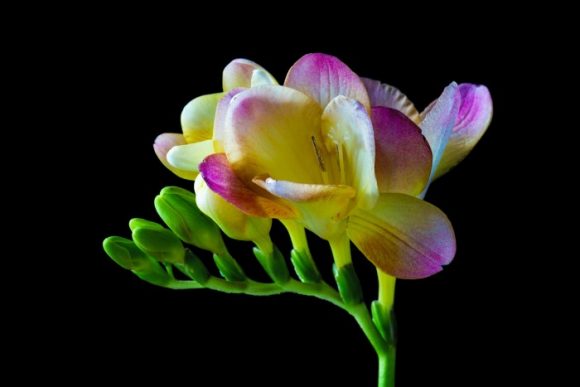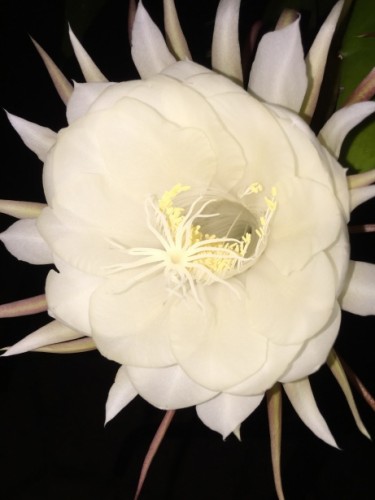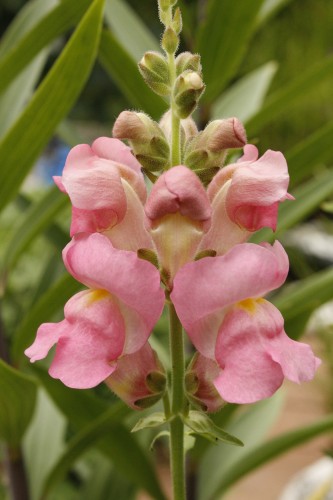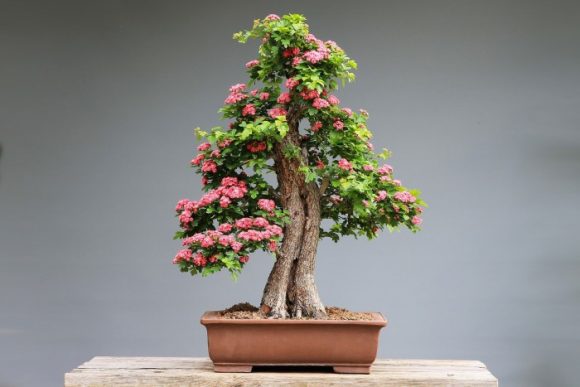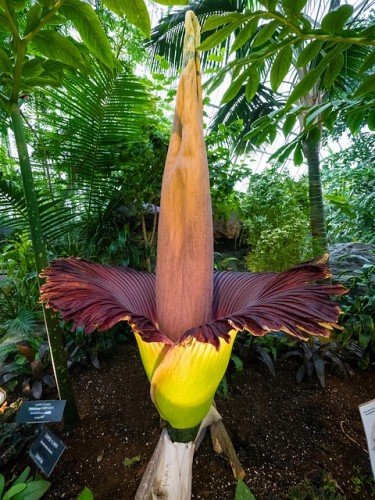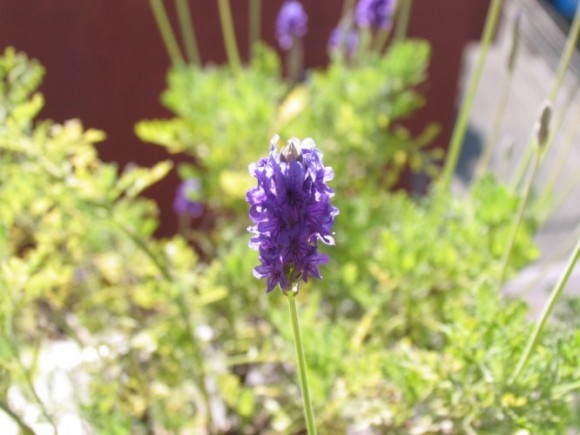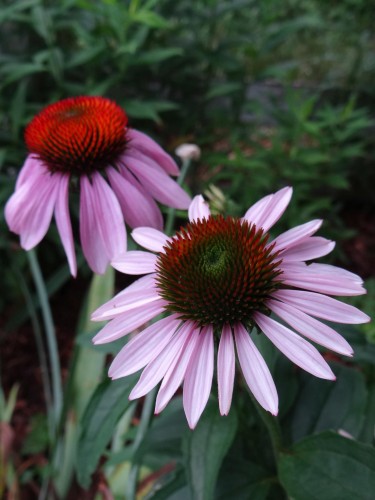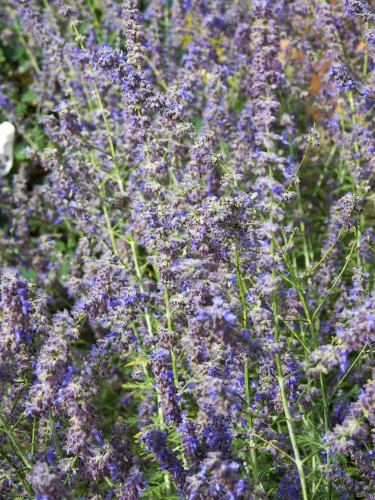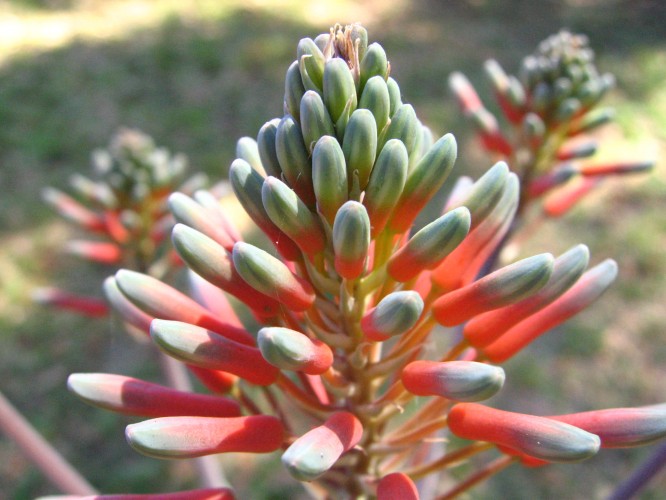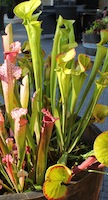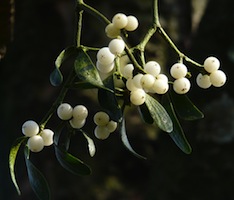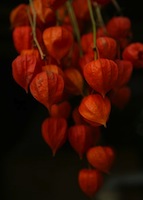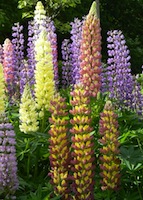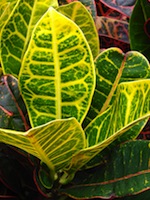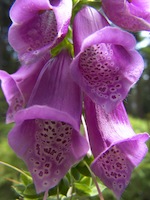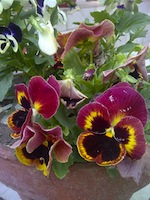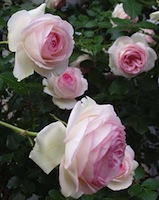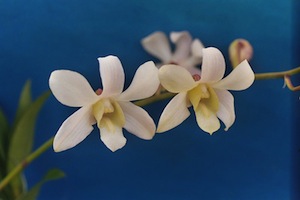Search Results for “”
The Evolution of Wedding Flowers
Today, we will delve into the lovely world of wedding flowers and their evolution over time. Wedding flowers are an essential part of any marriage ceremony. They are not only stunning decorations to frame the bride and groom but they can also carry a deep symbolic meaning, representing love, purity, and fertility. Let us explore how wedding flowers have evolved over the years, reflecting changes in fashion, cultural traditions, and personal preferences. Continue reading [...]
The Significance of Flowers in Different Cultures
This is just a fraction of the incredible cultures in our world today, all of which their own concept and meaning of flowers. Flowers have held symbolic meanings and cultural significance in many different cultures throughout history. From ancient Greece to modern-day Japan, flowers have played an important role in conveying meaning and representing cultural beliefs and traditions. Whether used in religious ceremonies or as a symbol of good fortune, flowers continue to hold an important place in cultures around the world. Continue reading [...]
The Health Benefits of Fresh Flowers
Thank you for joining us today as we discuss the surprising health benefits of fresh flowers. I think we would all agree that being surrounded by fresh flowers, whether it be in the garden, at the conservatory, or even just beside a simple vase of fresh-cut flowers, gives off a sweet, serene feeling. Flowers have long been appreciated for their beauty and their ability to brighten up a room, but did you know that they also have numerous health benefits? From improving mental health to boosting physical well-being, flowers have a lot to offer in terms of their medicinal properties. Continue reading [...]
How to Say “I’m Passionately in Love” with Flowers
In my last article I explained a few options for flowers that represent the sentiment "I love you." As you may have guessed, red roses are the pinnacle of romantic symbolism, but I included some other interesting tidbits about roses, forget-me-nots, and Lily of the Valley. I also mentioned that there are hundreds of sentiments that can be expressed in this manner. If one wishes to convey the message of "I am passionately in love," the language of flowers provides a range of options to express such intense feelings. Continue reading [...]
The Proper Flowers to Say “I Love You”
It is with great pleasure that I have been asked to compose this article for you, on the fascinating topic of the language of flowers. In particular, we shall explore how the language of flowers was used to express love and affection, and how one could convey the powerful message of "I love you" through the subtle and beautiful language of blooms. Continue reading [...]
Virginia Spring Beauty: For Food, Medicine and Weather Purposes
Claytonia virginica, commonly known as Virginia spring beauty, fairy spud, eastern spring beauty, grass-flower, or just spring beauty, is a low-growing, pretty, perennial wildflower, and delicious vegetable. It is native to North America and thrives in sunny river banks, well-watered woodlands, and thickets. Continue reading [...]
Geraniums: Two Floral Families with Striking Flowers
Pelargonium is a broad family that encompasses many cheerful flowers. Whether you choose bedding geraniums or hardy cranesbill, these plants are a lovely gift for a spring birthday, graduation, or Mother's Day. From annuals to perennials to succulents, there's a member of the geranium family sure to please everyone. Continue reading [...]
Edible Squash Blossoms to Share with Family and Friends
Do you have dozens of new squash blooms late in the growing season? It may be too late for those flowers to develop into fruits, but that doesn't mean they have to go to waste. Squash blossoms are edible and can be incorporated into a delicious harvest dinner.
Continue reading [...]
Stonecrop Brings “Autumn Joy” to the Garden
Stonecrop is a family of around 500 varieties of succulent plants that will add low-maintenance color and interest to your fall garden. Continue reading [...]
Gorgeous Green Blooms to Light Up the Room
When we think of flowering plants, we usually visualize green leaves with blooms in shades of pretty pastels and brilliant jewel tones. But did you know that there are many varieties of plants that have natural green flowers? Continue reading [...]
Japanese Anemones Shine in the Autumn Garden
As days grow shorter and summer blooms begin to fade, Japanese anemones come into their full glory. With oversized leaves and tall stems bearing charming flowers, Japanese anemones make a bold statement in your autumn garden. Continue reading [...]
Welcome Autumn with Chrysanthemums
Hardy chrysanthemums, also called mums, are a beacon of autumn in North America. Blooming in late summer through mid-fall, mums add a pop of color when other garden plants are dying back for the year. Continue reading [...]
“Exploding” Jewelweed is Popping with Fun
Jewelweed is a yellow or orange flowering plant whose claim to fame is that the ripe seed pods "explode" or burst open when touched. Much to the delight of children and fun-loving adults, these plants have a quite entertaining method of dispersing their seeds. Continue reading [...]
Venus Flytrap: The Perfect Gift for Curious Kids
The Venus flytrap is the most mysterious and notorious of house plants. These carnivorous plants were made famous (or infamous) in the cult classic movie "Little Shop of Horrors" and have been intriguing curious kids for decades ever since. Continue reading [...]
Prickly Cacti Make Perfect Presents
With over 1500 varieties, cacti are distinctive members of the succulent family. This diverse, yet easily identifiable, group of plants has become nearly synonymous with southwestern culture throughout the Americas.
Continue reading [...]
Make it Yourself: Flower Infused Salt and Sugar
If your herb garden is overflowing and you'd like a unique way to share your harvest, consider making infused salt or sugar. Using the flowers and leaves from popular culinary herbs allows you to create thoughtful and fun gifts with little effort. Continue reading [...]
Make it Yourself: Flower Infused Vinegars and Oils
You may be familiar with chili-infused oil and tarragon-infused vinegar. But did you know that many herb flowers can be used to add flavor to condiments? Not only are the leaves and seeds of herb plants edible, many have flowers that impart delicious flavor as well. Continue reading [...]
Patriotic Petals: Check Out these National Flowers
The majority of the world's countries have a national flower that is meaningful to its people. These emblems may have been chosen by popular consensus, government selection, or a long-standing tradition in the history of the nation. Most national flowers are indigenous to the area that they represent. Many have played a role in a region's culture for hundreds of years or more. In general, the national flower is beloved by the people it embodies. Continue reading [...]
Statice, Feverfew, Baby’s Breath, and More: Festive Filler Flowers that Stand on Their Own
Filler flowers are flowers that add volume and texture to floral arrangements. They may tend to be muted in color and may not have a strong fragrance. Nevertheless, many filler flowers are beautiful enough to stand on their own or as a focal point in a floral design.
Continue reading [...]
Fragrant Lilacs Symbolize Remembrance
The flowering lilac is a bush that seems to be everywhere in the spring in North America. The lilac's early bloom time makes it a welcome sight after a long winter. Its clusters of small blooms and sweet fragrance make it easily recognizable as a symbol of the season of renewal.
Continue reading [...]
The Magnolia’s Long History of Symbolizing Grace and Beauty
The stately magnolia has been admired as a symbol of beauty and nobility for countless centuries. In fact, fossils indicate that the magnolia tree and its blooms have remained nearly unchanged for the last 100 million years! Continue reading [...]
Ranunculus Flowers are Whisper-Thin Gems in Your Garden
Ranunculus flowers are known for their brilliant colors and layers of paper-thin petals. They belong to the botanical family of the same name, which encompasses more then five hundred species. Continue reading [...]
Buttercups are Sunshine in Flower Form
Buttercups are brilliant yellow members of the ranunculus family. Buttercups make up nearly one fifth of the species of this family. There are variations in the number of petals and where the flowers grow, but almost all varieties share the distinctive butter-yellow petals for which they are named. Continue reading [...]
Delphinium and Larkspur Send a Message of Heroism
The statuesque delphinium is easily recognizable for its tall spike of five-petaled flowers. One of the birth flowers for July, these flowers are named for the Latin word for dolphin and their history goes back several thousand years. Continue reading [...]
The Many Meanings of Dahlias
As a cut flower or in the garden, the bold dahlia always makes a statement. The dahlia family boasts thousands of hybrids, making it possible to find the perfect flower for someone special. Continue reading [...]
Graceful Orchids are Perfect for Gift-Giving
Orchids have been highly prized since the time of the ancient Romans. Aside from the beauty of the flowers, orchids have several practical uses as well. There are medicinal and culinary applications that have long-standing traditions across the world. Continue reading [...]
The Stately Gladiolus Represents Integrity and Passion
The gladiolus flower is best known for its tall spikes of ruffled blooms. These stems can reach two to four feet in length with blossoms blooming in succession from the bottom up. Gladioli are a member of the Iris family and originated in Africa and the Mediterranean several thousand years ago. Continue reading [...]
Use Orange Flower Water to Create a Sweet Gift
Orange blossom water has diverse uses in cosmetic, culinary and aromatherapy applications. Orange flower water has been popular in Middle Eastern culture for centuries and has been highly valued by the French since the time of Marie Antoinette. Continue reading [...]
Set Your Garden on Fire with Gloriosa Superba
With a scientific name like Gloriosa superba, you might say that this fiery beauty is superb in color and full of glory. And you would be right! Continue reading [...]
Hibiscus is a Bold Statement of Beauty
Hibiscus are a family of five-petaled flowering plants often associated with exotic tropical locales. The hibiscus flower is considered to be quite feminine, as the petals are often ruffled and come in warm shades of reds, pinks, and lavenders. Continue reading [...]
Rose Water is an Essential Gift for Rose Lovers
Roses have been cultivated for medicinal, culinary and cosmetic uses for over two thousand years. Steam-distilling methods have been used to extract the essential rose oil throughout most of this time. The by-product of this technique is rose water, a versatile liquid that can be used in culinary, beauty, and even religious applications. Continue reading [...]
A Gift of Irises Sends a Regal Message
Irises are a popular cut flower, often found in mixed arrangements with roses or lilies. They are also quite striking on their own. Dating back several thousand years, the iris flower has long been associated with both royalty and heaven. Continue reading [...]
Alstroemeria is the Right Flower for a Dear Friend
Popular in cut floral arrangements, alstroemeria are small lily-like flowers that are native to South America. They are one of the most common cut flowers in Europe with an increasing following in the United States. Continue reading [...]
Bring on the Dancing Girls: Impatiens Bequaertii
Among the world’s rarest and most enchanting flowers, Impatiens bequaertii is part of the impatiens family but has no acknowledged species name. Most notable for their petals resembling little dancing ladies in skirts, they are commonly referred to as dancing girls. Continue reading [...]
Freesia is the Right Flower to Give to Someone Sweet
Freesia is a popular multi-bloom flower with a distinctive sweet scent. Freesia is available in gentle pastel colors such as white, yellow, pink and lavender. It is among the most popular choices for floral bouquets. Continue reading [...]
Night Blooming Cereus—Here and Gone in a Flash!
Whether you call it night blooming cereus, Epiphyllum oxpetalum or Queen of the Night, this unusual flower is a knockout while it lasts. Native to Arizona and the Sonara desert, night blooming cereus is a member of the orchid cactus family. Continue reading [...]
The Long History of Snapdragons as Cut Flowers
Snapdragons have been a popular cut flower for thousands of years. Snapdragons have long been highly regarded for both their beauty and the legends that accompanied them. Continue reading [...]
Daisies Send a Message of Good Cheer
Daisies, both wild and cultivated, have a rich history of folklore and symbolism. The word daisy comes from the Old English "day's eye" because the petals open at dawn and close at dusk. Continue reading [...]
The Flower Named after Meghan Markle, Duchess of Sussex: Clematis Meghan
Being in the royal spotlight comes with many challenges, but clearly has its sweet spots. Clematis Meghan, named after the Duchess of Sussex, is making its debut at the famed Chelsea Garden Show May 21-25, 2019. Continue reading [...]
Bonsai is the Right Gift for the Patient Gardener
Bonsai refers to a tree or shrub that is grown in a shallow vessel and pruned to retain a compact form. This process can take years or even decades to achieve the desired result. It is said to promote inner peace and tranquility.
Continue reading [...]
A Flowering Herb Garden is the Right Gift for Someone who Loves to Cook
Many gardeners who love to cook grow an herb garden. Few things make more of a flavor impact than fresh herbs. But did you know that many classic herbs also have edible flowers?
Continue reading [...]
Violets: A Popular Gift Since Ancient Times
Violets have been given as gifts of affection for hundreds of years. There are numerous myths about their creation and their significance as gifts going back at least two thousand years. Continue reading [...]
Helleborus is an Early Messenger of Spring
Helleborus makes a thoughtful gift to a loved one's garden by providing color in winter and early spring. Usually found in shades of pinks and purples, their shape resembles a wild rose. Continue reading [...]
Daffodils Mean a Gift of Sunshine
Daffodils are considered by many to be an iconic symbol of spring thanks to their brilliant colors and fresh scent. Daffodils mean a gift of sunshine because of their cheerful colors in early spring. Continue reading [...]
Forsythia are Beacons of Springtime
Forsythia are beacons of springtime. When the branches and buds start to turn a brilliant shade of yellow, we know that warmer weather is right around the corner. Continue reading [...]
A Flower that Only a Botanist Could Love
Beautiful colors and luscious fragrances – we must be talking about flowers, right? Not so fast! There is a bizarre species of flowers that neither look nor smell pretty. In fact, they literally stink. Continue reading [...]
A History of Flowers as Gifts
There is a long tradition of giving flowers as gifts throughout history. People across the world have been using flowers to express their sentiments for thousands of years. In ancient Greece, Rome and China, flowers were believed to be divinely inspired and were laden with meaning when given as a gift. Continue reading [...]
Make Your Own Body Scrub With Flowers
Basic homemade body scrub recipes start with a carrier oil. You can use the oils in the recipes we’ll give you or swap them out with an oil of your choice. Some of the best oils include almond, coconut, apricot and olive. For the scrubbing ingredients, use sugar or salt of you want something that will exfoliate gently and eventually liquefy, which is good because you don’t want large particles of your body scrub clogging up your drain. Finally, pick your favorite flower essences and Continue reading [...]
Flowers and Kids: Planting for a Fun Summer Project
Looking for fun summer projects to do with your little ones? Consider planting flowers with kids. Continue reading [...]
About the Daisy
Have you been thinking about new beginnings and fresh starts like we have? Maybe because spring is almost here and the chill is going from the air, which means we’ve had more time to linger outside and notice the beauty that is all around, we’ve been appreciating the blue sky, the beach, and the flowers that are filling up the flower shops and farmers’ markets close to where we live.
We’ve been noticing daisies, wrapped in bunches in plain brown paper or placed carefully into more formal arrangements. Thoughts have been going through our minds about how the daisy perfectly represents innocence and purity, and how it seems like the flower guides us into times that are ripe for whatever happiness we want to create. Continue reading [...]
Rose Trivia
In honor of Valentine’s Day, and because there will likely be many roses sent and received for this special holiday, we thought we’d give you a bit of rose trivia to celebrate.
Roses are universal symbols of love. Most everyone knows that roses represent adoration, desire, friendship, and other forms of love that one person can have for another. But, roses offer more meanings and they come with some interesting stories. The following are some pieces of rose trivia we thought you’d like to know about. Continue reading [...]
More Flowering Herbs for an Herb Garden
We recently told you about some flowering herbs that we like to keep in our home or in our garden. But, later we realized that there were more herbs we wanted to share with you.
Herbs are amazing plants because they offer so much beauty, and benefit, for us. They’re ideal for using in cooking, they provide healing in the form of natural medicine, and they lift our spirits when we think about the beautiful way nature provides for us through them. Continue reading [...]
Creating a Flowering Herb Garden
Two things that we love about spending time in our homes are eating and enjoying the fresh flowers we’ve surrounded ourselves with. We figured out a way to combine both of these delights into one treasure, one that we think you’ll love to have around.
We created a flowering herb garden. We made one that will supply us with beauty for the eyes, and for the palate, for a long time to come.
A flowering herb garden can offer a pretty view when looking out the kitchen window. And, it can offer a delightful scene in a yard or on a patio. Flowering herbs make for tasty ingredients in homemade meals, both sweet and savory ones. They can also be used in healing juices, teas, and elixirs. Continue reading [...]
Flowers that are Safe for Companion Animals
Having companion animals and flowers together in a house can make for a happy life. But, choosing animal friends and flowers that can coexist is essential to bring about all of this happiness.
If you have cats or dogs who live with you, and you want to have a bit of floral beauty in your home, the following is a guide to which flowers you should choose and which should stay at the florist. Continue reading [...]
Some Popular Flowers and Their Meanings
If you’re trying to choose flowers that say something specific to your recipient, whether it’s “I love you,” “Thank you,” “Get well,” or “I miss you,” there is a special bloom that will perfectly express your sentiment.
Continue reading [...]
The Beautiful Anemone
Are you a fan of the anemone? Have you seen this flower and the gorgeous dark inky centers that make it unique?
The anemone is one of our favorite flowers. It’s a go-to for us when we’re decorating for a dinner party, baby shower, Christmas gathering, or special luncheon.
The anemone brings grace and class to any function. It comes in many colors, but the white and purple blooms are to-die-for in our opinion. Continue reading [...]
Flower Meanings by Color
Many people choose the colors of flowers they give by how the colors make them feel. For instance yellow brings happiness to mind for a lot of people, while red makes one think romantic thoughts.
Sometimes, a flower buyer wants to select blooms in colors that actually signify deep meaning. They want to pick flowers in colors that will pass on long-standing traditional messages, whether those messages be of loyalty, friendship, or gratitude. Continue reading [...]
Flowers to Companion Plant in a Vegetable Garden
If you have a vegetable garden and are looking for the right flowers to plant to keep critters away, we have some ideas for you. Continue reading [...]
Flowers to Attract Wildlife
Do you love the idea of wildlife hanging out in your garden, or stopping by to visit your patio? We do. So, we did a little research to find out which flowers wildlife are attracted to.
We wanted to get an idea of flowers that would be great for planting, or giving to someone, so that beautiful creatures would be enticed to come to our home or to our friend’s house. Continue reading [...]
Flowers to Attract Hummingbirds
There’s something about a hummingbird that brings joy to a moment. When we see a hummingbird, in our garden or as we’re going about our life, we take pleasure in watching the little bird’s seeming playfulness and in feeling the joy that it appears to have as it goes about its activities.
Without being inside the mind of a hummingbird, we can’t say for sure that it flits from here to there (and from flower to flower) with joy on its mind. But, it sure looks that way. In may cultures, in fact, hummingbirds do represent joy and they serve as a reminder to savor each moment. Continue reading [...]
Flowers to Attract Butterflies
Do you love the sight of a beautiful butterfly? We do. They’re so graceful and light in their ways. They’re perfect examples, in our opinion, of how we might transform into people filled with grace and loving light. Continue reading [...]
4 Charming Floral Imports from China to Celebrate the New Year
Today is the official start of the Year of the Sheep!
With one of the oldest human cultures in the world, the Chinese New Year tradition is the most important of the year and is celebrated by millions of people around the globe. Based on a lunar calendar and lasting for 15 days, many people travel home to be with family, eat special food and attend celebrations with fireworks, performances and friends. If you want to start the Year of the Sheep off on the right foot, consider decorating your home or bringing a gift of one of these important flowers that were first cultivated in ancient China. Continue reading [...]
Killer Plants for Catching Fruit Flies
We've all done it.
Arriving home after a trip you walk into the kitchen and a swarm of tiny, little flies come swirling from those bunch of bananas you never got around to eating. With a life span of only a month or two, it's still surprisingly hard to get rid of those suckers. While all sorts of traps and homemade solutions exist, why not turn your infestation into a small science experiment by using one of these crazy carnivorous plants. Not only will they help control your fruit fly population, but they'll be a unique addition to your houseplant collection for years to come. Continue reading [...]
Kiss the Night Away Under Fresh Mistletoe
A symbol of the season, mistletoe is the iconic plant of Yuletide affection. Tied with a ribbon and hung above a door or threshold, tradition holds that lovers (or those who time their entrances wisely) smooch under the sprigs of mistletoe hung there. While this might make the plant a favorite for paramours, it is actually a slightly poisonous, parasitic plant that sucks the sap from trees in which it grows. How then did this leeching evergreen find its way down from the boughs of host trees an into the lore of Christmastime lovers? Continue reading [...]
Decorate for Day of the Dead with Marigolds
Tracing back to the ancient Aztecs, the celebration of Dia de Muertos falls on November 1st and 2nd each year as a day to remember and honor the departed loved ones in your life. A national holiday in Mexico, but celebrated around the world, the Day of the Dead is a time to decorate small alters, clean and beautify grave sites and to gather with friends and family to reminisce and tell stories about those who have died. Favorite food and beverages, treasured belongings, freshly baked bread and candied sugar skulls are all a part of the fiesta, but one of the most important decorations are the marigold flowers. Said to be the favored flower of the dead, the Mexican marigold (Tagetes erecta), sometimes called cempasuchil or Flor de Muerto, is an essential part of the traditional celebration. Continue reading [...]
Add Flare to Fall Arrangements with Chinese Lanterns
Like tiny, orange paper lanterns strung together along a stem, the hanging fruit of the Physalis alkekeng, (called Chinese lanterns, winter cherry or Japanese lantern) will light up a bouquet of autumn flowers. These uniquely shaped plants offer a wonderful harvest look to any arrangement and are fun to tuck into a vase or add along the edges of a table or wreath. In great fall colors like burnt umber and pumpkin orange, these long-lasting stems are the perfect choice for an autumnal bouquet. Continue reading [...]
Celebrate Native American Day with these Indigenous Flowers
In many states across the nation, the second Monday in October is somewhat contentious. While many calendars mark it as Columbus Day to celebrate his "discovery" of America, others see it as an opportunity to highlight the rich history and culture of the indigenous peoples of our country. Regardless of what title you give this holiday, it is a time to reflect on the natural riches and scenic wealth of our lovely lands. With thousands of native plants to admire, try out one of these two listed below for a bouquet or arrangement that was truly "made in America." Not only are these native plants lovely to look at, but many also have served other important uses to America's first peoples. Continue reading [...]
Celebrate Labor Day with Lupine
One does not typically associate labor and toil with a day of festivities, but the invention of Labor Day in America was started as just that way back in 1882. Seen as the swan song of summer and the last long weekend for barbeques and bocci ball, celebrate this national holiday with the lupine flower. At its finest as the dog days simmer down into cooler nights and crisper mornings, this native wildflower works hard to look good in a vase next to the roasted corn and sweet iced tea. Continue reading [...]
Welome Back to School with Begonias
A teacher friend once described the month of August as one long Sunday night, with educators, students and parents all mentally preparing for the start of school. While you are busying packing up the pencils and notebooks for the new year, pick up a begonia as a gift for yourself, a teacher or student, as a reminder that there's always time to stop and smell the roses while this busy time of year begins. While the begonia does not have much of a fragrance, certain types are said to symbolize cleverness and popularity. Named for a 17th century governor, Michael Begon, by the famous French botanist, Charles Plumer, the begonia got a bad rap for having a name that sounded like the word "beware" in Latin. In the Victorian language of flowers that was all the rage at the time, the begonia was sent as a message of warning. With hundreds of different species in three different subgroups, it is unfair to associate all of them with caution and imminent danger. In the 21st century it's time to reclaim this large group of lush flowering plants and have them symbolize the upside of wariness, which includes adventure, opportunity, and the wonderful feeling that something big is about to happen. Continue reading [...]
Send a Student off to College with a Colorful Croton Plant
As bags are being unpacked and books bought for the new semester, a splash of color in a drab dorm room or tiny apartment will bring a smile to your favorite college-bound kid's face and brighten up their academic year. The croton is the perfect houseplant for sending a student off to college and will be a welcome reminder of home. Easy to care for with cheerful, multicolored leaves, the croton will thrive in a sunny corner from orientation until finals week. Continue reading [...]
Killer Flowers that are Drop Dead Gorgeous
Beauty comes with a price.
In the evolutionary arms race to both attract pollinators to their flowers and repel herbivores from munching on their leaves, many plants have developed an arsenal of chemical weapons. Carefully created compounds inside many plants' leaves, roots, seeds and stems give them a defense mechanism against passing grazers. What many of us don't realize, however, is that some of the loveliest flowers in a bouquet can also be some of the deadliest. While it would take quite a bit of munching on these drop dead gorgeous blooms to actually cause a human much harm, their toxic nature certainly lends a new respect to these frilly florist favorites. Continue reading [...]
DIY Guide to Farmers’ Market Bouquets
Nothing says summer quite like a lively bouquet of flowers picked fresh from the farm. Strolling through the stalls and sniffing on blooms brought in just that morning and tied with string is as much of a pleasure as the flowers themselves. Supporting local farmers and bringing a bit of the farm to your table is a great tradition May through October, but now you can put together these bountiful bouquets year round by following the advice below.
Continue reading [...]
3 Reasons Why Pansies are the Perfect Flower for a Parent’s Birthday
Derived from the French word, pensée, which means "thought," the dainty and colorful blooms of the pansy are a thoughtful gift to bring mom or dad on their birthday. Sometimes called violas, these highly stylized, hybrid flowers have been a lovely addition to the garden since the late 1800's and are immensely popular as a bedding plant tucked into the border or in a pot all by themselves. Whether your parent likes to garden or simply sit and enjoy a nice flower, the happy, nodding faces of pansies turn towards the sun and brighten up any landscape. Pansies make an excellent gift tucked into a pretty new decorative pot on the porch and come with a whole lot of stories to tell. Whether mom or dad is into history, art or politics, celebrate their birthday with a plant that gets them thinking. Continue reading [...]
Make History with Vintage Roses
After literally thousands of years of cultivation, the wild, five-petaled rose found growing on the hillsides of Asia and Europe has been transformed into the botanical behemoth it is today. While progressive breeding and specific selection has given the rose both girth and consistency, many have found that those features have come at a cost to both fragrance and form. Fortunately, roses live longer than most people and many an old bush has been found growing in churchyards and along roadsides. Gardeners and florist have propagated these vintage blooms into a new market, calling them antique roses. Continue reading [...]
Best flowers for a Hawaiian-themed Celebration
If you are lucky enough to live in the land where palm trees sway, then lush, tropical flowers will simply be out your front door, but for the rest of us, there are dendrobium orchids. Whether it's for a graduation, a retirement, a welcome home or simply a party to welcome the coming of summer after a long, cold winter, a Hawaiian Luau just wouldn't be complete with some flowers tucked behind the ears, strung around the neck or scattered in vases around tables. While tropical flowers actually do grow on trees in Hawaii, they can cost a pretty penny in more temperate climates. Temper the cost by choosing the wildly exotic, but extremely affordable dendrobium orchid. Continue reading [...]
Best Flowers to Send a Man to Celebrate a Promotion
Congratulating a man on his promotion may call for some slaps on the back and brews after work, but the best way to welcome him to that corner office on the first day is a vase full of anthuriums. These tall, tropical flowers, sometimes called Flamingo Lilies, have a certain stateliness to them and a rather masculine appearance that makes them appropriate for tough guys and softies alike. While the bright red variety gives off a sense of power, the meaning of this bloom in the language of flowers symbolizes hospitality. A vase or potted container full of anthuriums sends the message that he's the guy in charge, but the door is always open. Continue reading [...]
The Language of Flowers: a Brief History
The Language of Flowers, known as floriography, has a history much like any language with influences from its diverse background of speakers. The ability to convey messages through the scent, sight and gift of flowers has a tradition that has risen and fallen with empires and traveled from old world to new, picking up new meanings and losing some in translation along the way. Continue reading [...]


